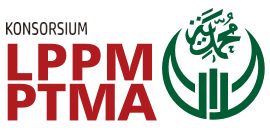Analysis of Alcohol Content in Anaerobic Fermentation of Watermelon (Citrullus lanatus) and Orange (Citrus sinesis) using Fermipan
DOI:
https://doi.org/10.53017/ujhs.243Keywords:
Alcohol, Fermentation, YeastAbstract
Fermentation is a process of chemical changes in organic substrates through enzymes obtained by microorganisms which is an anaerobic deassimilation of organic compounds and is caused by the activity of microorganisms. This study aims to determine the alcohol content in different formulations of fermipan addition used in orange and watermelon liquids. The research design method used in this study is a Complete Randomized Design (CRD) consisting of two factors. The first factor is the type of substrate (S): watermelon (S1) and orange (S2), while the second factor is the concentration of yeast/Fermipan: 0% (R1), 1% (R2), 2% (R3). Data analysis was done descriptively quantitative and descriptive qualitative. The results showed that alcohol content with orange substrate was higher than watermelon. Other alcohol fermentation activities such as pH, CO2 and H2O also corroborate the data that the orange substrate is more active than the watermelon substrate. More yeast concentration (up to 2%) resulted in higher alcohol content and alcoholic fermentation activity.
Downloads
References
Suprihatin, Teknologi Fermentasi. Surabaya: UNESA Press, 2010.
T. Khazalina, “Saccharomyces cerevisiae in making halal products based on conventional biotechnology and genetic engineering,” Journal of Halal Product and Research, vol. 3, no. 2, p. 88, Nov. 2020, doi: 10.20473/jhpr.vol.3-issue.2.88-94.
K. Nifa, I. K. Dewi, and T. Lestari, “Uji aktivitas antioksidan lotion ekstrak etanol daun kelor (Moringa oleifera Lam.) dengan metode DPPH (2,2-Diphenyl-1- Picrylhydrazil),” Borobudur Pharmacy Review, vol. 3, no. 1, pp. 8–14, 2023, doi: 10.31603/bphr.v3i1.8835.
H. Afrianti, Teknologi Pengawetan Pangan. Bandung: Alfabeta, 2013.
S. Kusmawati, H. Rizqiati, Nurwantoro, and S. Susanti, “Analisis Kadar Alkohol, Nilai pH, Viskositas dan Total Khamir pada Water Kefir Semangka Semangka dengan Variasi Konsentrasi Sukrosa,” Jurnal Teknologi Pangan, vol. 4, no. 2, pp. 127–130, 2020, doi: 10.14710/jtp.2020.24157.
H. Tandipayuk and S. Aslamyah, “Fermentasi tepung ampas tahu dengan cairan mikroorganisme mix. Sebagai bahan baku pakan,” Jurnal Agrokompleks, vol. 9, no. 1, pp. 9–15, 2020.
H. D. Faridah and S. K. Sari, “Pemanfaatan mikroorganisme dalam pengembangan makanan halal berbasis bioteknologi,” Journal of Halal Product and Research, vol. 2, no. 1, pp. 33–43, 2019.
Pracaya, Jeruk Manis, Varietas, Budidaya dan Pascapanen. Jakarta: Penebar Swadaya, 2020.
M. F. Sari and R. H. Catarina, “Perbandingan Karakteristik Minuman Probiotik Semangka (Citrullus lanatus) Dengan Variasi Jenis Semangka Merah Dan Kuning Menggunakan Starter Lactobacillus casei Strain Shirota,” Biota?: Jurnal Ilmiah Ilmu-Ilmu Hayati, pp. 25–33, Jun. 2020, doi: 10.24002/biota.v5i1.2945.
U. Fadilah, I. M. M. Wijaya, and N. S. Antara, “Pengaruh pH Awal Media dan Lama Fermentasi pada Proses Produksi Etanol dari Hidrolisat Tepung Biji Nangka dengan Menggunakan Saccharomycess cerevisiae,” Jurnal Rekayasa dan Manajemen Agroindustri, vol. 6, no. 2, p. 92, Apr. 2018, doi: 10.24843/JRMA.2018.v06.i02.p01.
N. Azizah, A. N. Al-Barrii, and S. Mulyani, “Pengaruh lama fermentasi terhadap kadar alkohol, pH, dan produksi gas pada proses fermentasi bioetanol dari whey dengan substitusi kulit nanas,” Jurnal Aplikasi Teknologi Pangan, vol. 1, no. 3, 2012.
Downloads
Published
How to Cite
Issue
Section
License
Copyright (c) 2024 Firda Amanah, M. Reisa Andika, Lativa Restu Hapsari, Pujiati, Dinda Ayu Wijayanti, Triastuti Rahayu

This work is licensed under a Creative Commons Attribution-NonCommercial 4.0 International License.





